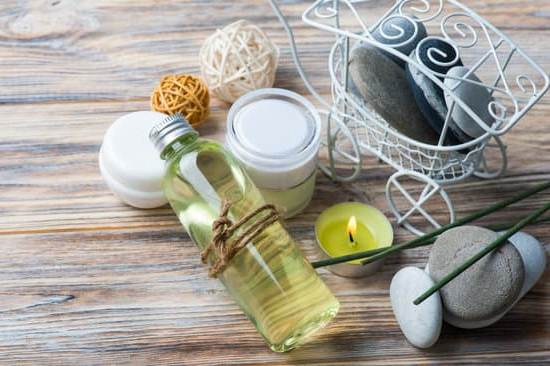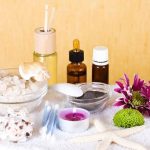Aromatherapy has been used for centuries as a natural way to promote relaxation, improve mood, and enhance overall well-being. An essential tool for anyone interested in delving into the world of aromatherapy is an Aromatherapy Oil Chart. This chart serves as a comprehensive guide to the wide variety of essential oils available, detailing their properties, benefits, and uses. By referring to an aromatherapy oil chart, beginners can gain insight into which oils may best suit their needs and preferences.
One of the key advantages of using an aromatherapy oil chart is that it provides clarity on the benefits of different essential oils. Each oil boasts unique therapeutic properties that can target specific ailments or aid in achieving certain goals, such as stress relief or improved focus. By consulting an aromatherapy oil chart, individuals can quickly identify which oils align with their desired outcomes and incorporate them into their daily routine effectively.
Furthermore, understanding how to use aromatherapy oils safely is paramount in harnessing their full potential without any adverse effects. An Aromatherapy Oil Chart not only outlines the benefits and uses of each oil but also offers guidance on proper dilution ratios, application methods, and precautions to ensure a safe and enjoyable aromatherapy experience. With the help of this valuable resource, beginners can explore the world of aromatherapy with confidence and peace of mind.
Benefits of Using Aromatherapy Oils
Aromatherapy oils have been used for centuries for their various benefits to physical and mental well-being. These natural oils are derived from plants and have unique properties that can help improve mood, reduce stress, promote relaxation, and even boost immunity. Incorporating aromatherapy oils into your daily routine can have a positive impact on your overall health.
Here are some of the key benefits of using aromatherapy oils:
- Stress relief: Certain essential oils like lavender, chamomile, and bergamot are known for their calming effects and can help reduce symptoms of anxiety and stress.
- Improved sleep: Essential oils such as sandalwood, cedarwood, and ylang-ylang have sedative properties that can promote relaxation and improve the quality of sleep.
- Enhanced focus and concentration: Scents like peppermint, rosemary, and lemon can help increase alertness, focus, and cognitive performance.
Using aromatherapy oils in a diffuser or diluted in a carrier oil for massage can also help alleviate symptoms of headaches, muscle tension, and digestive issues. It’s important to note that while aromatherapy oils provide many benefits, they should be used with caution to avoid any adverse reactions.
- Avoid applying undiluted essential oils directly to the skin as they can cause irritation or allergic reactions. Always dilute them in a carrier oil before topical use.
- Do a patch test before using a new essential oil to check for sensitivity or allergic reactions.
- Keep essential oils out of reach of children and pets as some oils can be toxic if ingested.
Overall, incorporating aromatherapy oils into your daily routine can be a simple yet effective way to enhance your well-being naturally. With the right knowledge about different types of essential oils and how to use them safely, you can experience the full benefits these aromatic wonders have to offer. Explore the world of aromatherapy with an aromatherapy oil chart as your guide to creating your own blends tailored to meet your wellness needs.
How to Use Aromatherapy Oils Safely
Aromatherapy oils are potent and concentrated substances that can offer a wide range of benefits when used properly. However, it is crucial to understand how to use these oils safely to prevent any adverse reactions or side effects. Here are some guidelines on how to use aromatherapy oils safely:
- Dilution: Most essential oils should be diluted with a carrier oil before applying them to the skin. This helps reduce the risk of irritation or sensitization. The typical dilution ratio is 1-3% essential oil to carrier oil.
- Patch Test: Before using a new essential oil, always perform a patch test on a small area of skin to check for any allergic reactions. Wait at least 24 hours before using the oil more extensively.
- Inhalation: Aromatherapy oils can be inhaled by adding a few drops to a diffuser or a bowl of hot water. Be cautious not to inhale too closely or too deeply, as this can cause respiratory irritation.
Proper storage is also essential in ensuring the longevity and effectiveness of your aromatherapy oils. Store them in dark glass bottles in a cool, dry place away from direct sunlight and heat sources.
Remember that certain essential oils are phototoxic, meaning they can cause skin sensitivity when exposed to sunlight. Always read and follow the safety guidelines provided by reputable sources or consult with a qualified aromatherapist before using any new essential oil.
By following these safety precautions and guidelines, you can enjoy the benefits of aromatherapy oils while minimizing potential risks or negative reactions. Incorporating aromatherapy oils into your daily routine can enhance your overall well-being and promote relaxation and balance in your life.
Understanding Different Types of Aromatherapy Oils
Aromatherapy oils come in various types, each with its unique properties and benefits. It is essential to understand the differences between these oils to harness their full potential in aromatherapy practices. Some common types of aromatherapy oils include lavender, peppermint, eucalyptus, tea tree, and lemon. Each of these oils has distinct characteristics that make them suitable for specific uses.
Lavender oil is well-known for its calming and soothing properties, making it ideal for relaxation and promoting a good night’s sleep. Peppermint oil, on the other hand, is invigorating and can help with mental focus and clarity. Eucalyptus oil is often used for respiratory support and clearing congestion, while tea tree oil is popular for its antimicrobial and skin-healing properties. Lemon oil has a fresh and uplifting scent that can help boost mood and energy.
To better understand the wide range of aromatherapy oils available, referring to an aromatherapy oil chart can be beneficial. A comprehensive guide will detail the properties of each oil, including their therapeutic benefits and recommended uses. This resource can assist beginners in selecting the right oils for their needs and creating personalized blends for various purposes.
When using different types of aromatherapy oils, it is essential to consider individual preferences and sensitivities. Some people may have allergic reactions or sensitivities to certain oils, so conducting a patch test before widespread use is recommended. Additionally, mixing compatible oils to create synergistic blends can enhance their effectiveness in aromatherapy practices.
| Aromatherapy Oil | Properties |
|---|---|
| Lavender | Calming and soothing |
| Peppermint | Invigorating and mentally clarifying |
| Eucalyptus | Respiratory support and congestion relief |
| Tea Tree | Antimicrobial and skin healing |
Creating Your Own Aromatherapy Oil Blends
Benefits of Customizing Your Own Blends
Customizing your own aromatherapy oil blends can be a rewarding experience as it allows you to cater to your specific needs and preferences. By creating personalized blends, you can target multiple concerns at once and tailor the aroma to suit your taste. Furthermore, blending oils gives you the flexibility to experiment with different combinations and create unique scents that uplift your mood or promote relaxation.
Essential Oils for Blending
When creating your own aromatherapy oil blends, it’s essential to choose high-quality essential oils that complement each other well. Some popular essential oils for blending include lavender, peppermint, eucalyptus, and chamomile. Each oil has its unique therapeutic properties, so consider the desired effect you want to achieve when selecting oils for your blend. For example, if you’re looking to create a calming blend, you may opt for lavender and chamomile oils.
Blending Techniques
There are various blending techniques you can utilize when creating your aromatherapy oil blends. One common method is the “equal parts” technique, where you mix equal amounts of each essential oil in your blend. Another approach is the “top note, middle note, base note” method, where you combine essential oils with different volatility levels to create a balanced scent profile.
Experiment with different ratios and combinations until you find a blend that resonates with you. Keep track of your creations using an aromatherapy oil chart to document the ingredients and proportions for future reference.
Top 10 Must-Have Aromatherapy Oils in Your Collection
The world of aromatherapy is vast and diverse, with numerous essential oils offering various benefits for both the mind and body. When building your collection of aromatherapy oils, it’s essential to start with a few key oils that can serve multiple purposes. Among the top 10 must-have aromatherapy oils in your collection are Lavender, Peppermint, Eucalyptus, Tea Tree, Lemon, Rosemary, Chamomile, Ylang Ylang, Frankincense, and Bergamot.
Lavender oil is well-known for its calming properties and is often used to promote relaxation and improve sleep quality. Peppermint oil is great for boosting energy levels and alleviating headaches. Eucalyptus oil is commonly used for respiratory issues due to its decongestant properties. Tea Tree oil is a powerful antiseptic that can help with skin conditions like acne. Lemon oil has an uplifting citrus scent that can enhance mood and mental clarity.
Rosemary oil is excellent for improving focus and concentration. Chamomile oil is known for its soothing effects on the mind and body, making it ideal for reducing stress and anxiety. Ylang Ylang oil has a rich floral scent that can promote feelings of joy and sensuality. Frankincense oil is often used in meditation practices to enhance spiritual connection. Lastly, Bergamot oil has a fresh citrus aroma that can uplift the mood and reduce feelings of stress.
| Aromatherapy Oil | Main Benefits |
|---|---|
| Lavender | Calming properties; promotes relaxation |
| Peppermint | Boosts energy levels; alleviates headaches |
| Eucalyptus | Decongestant properties; helps with respiratory issues |
Aromatherapy Oil Chart
When diving into the world of aromatherapy, it can be overwhelming to understand the wide range of essential oils available and how to use them effectively. An aromatherapy oil chart is a valuable tool that provides a comprehensive guide for beginners, highlighting the benefits and properties of each essential oil. This chart acts as a roadmap, helping individuals navigate through the vast array of aromatherapy oils and choose the right ones for their needs.
A well-organized aromatherapy oil chart categorizes essential oils based on their therapeutic properties, such as calming, energizing, or immune-boosting. It also includes information on the different ways to use each oil, whether through diffusion, topical application, or inhalation. By referring to an aromatherapy oil chart, beginners can easily identify which essential oils align with their wellness goals and preferences, allowing them to create personalized blends that cater to their specific needs.
In addition to providing information on individual essential oils, an aromatherapy oil chart may also offer guidance on blending different oils together to enhance their effects. This chart can serve as a creative tool for beginners to experiment with various combinations and create customized blends that address multiple concerns simultaneously. Ultimately, a comprehensive aromatherapy oil chart empowers beginners to harness the full potential of essential oils and integrate them seamlessly into their daily routine for improved well-being.
Tips for Choosing High-Quality Aromatherapy Oils
When it comes to choosing high-quality aromatherapy oils, there are several factors to consider that can help ensure you are getting a product that is both effective and safe for use. One of the first things to look for is the botanical name of the essential oil.
This can give you a better idea of the plant source and ensure that you are purchasing a pure oil without any additives or synthetic elements. Additionally, it is important to choose oils that are labeled as being 100% pure or therapeutic grade.
Check for Certifications
Another important factor to consider when selecting aromatherapy oils is certifications. Look for oils that have been third-party tested or certified by reputable organizations such as the National Association for Holistic Aromatherapy (NAHA) or the Alliance of International Aromatherapists (AIA). These certifications can provide assurance that the oils have been properly sourced, distilled, and are free from contaminants.
Consider Your Needs
When choosing aromatherapy oils, it is also essential to consider your specific needs and preferences in terms of scent and therapeutic benefits. Some oils may be more suitable for relaxation and stress relief, while others may be better suited for boosting focus and energy. Take into account your desired outcomes when selecting oils to ensure they align with your goals for incorporating aromatherapy into your daily routine.
Overall, taking the time to research and carefully select high-quality aromatherapy oils can make a significant difference in the efficacy and safety of your aromatherapy practice. By paying attention to factors such as botanical names, certifications, and personal needs, you can feel confident in using these powerful essential oils to enhance your well-being physically, mentally, and emotionally.
Conclusion
In conclusion, incorporating aromatherapy oils into your daily routine can have numerous benefits for both your physical and mental well-being. The use of essential oils in aromatherapy has been practiced for centuries and is known for its therapeutic properties. By referring to an aromatherapy oil chart, you can easily identify the right oils that suit your needs and preferences.
Whether you choose to diffuse the oils, apply them topically, or add them to your bath, the versatility of aromatherapy oils allows you to experience their effects in various ways. From promoting relaxation and reducing stress to alleviating headaches and boosting energy levels, there is a wide range of benefits that these essential oils offer.
Remember to always prioritize safety when using aromatherapy oils. It is important to dilute them properly, perform a patch test before applying them to your skin, and store them away from direct sunlight.
By following these guidelines and exploring the different types of essential oils available, you can create unique blends tailored to address specific concerns or simply enhance your overall well-being. Embrace the power of aromatherapy oils in your daily routine and enjoy the holistic benefits they bring into your life.
Frequently Asked Questions
Which Essential Oil Is Used for What?
Lavender essential oil is commonly used for relaxation and stress relief, promoting better sleep, and soothing skin irritations. Peppermint oil is known for its ability to alleviate headaches and improve focus. Tea tree oil is often used for its antibacterial properties, making it effective in treating acne and other skin conditions.
Eucalyptus oil is popular for respiratory support and clearing congestion. Lemon oil is used to boost mood, energize, and purify the air.
What Are the 7 Essential Oils?
The seven essential oils that are widely recognized for their versatile uses are lavender, peppermint, tea tree, eucalyptus, lemon, frankincense, and rosemary. Each of these oils offers unique benefits ranging from relaxation to immune support to skincare solutions.
What Are the 12 Must Have Essential Oils?
The 12 must-have essential oils for a well-rounded collection include lavender, peppermint, tea tree, eucalyptus, lemon as versatile options with multiple benefits. Additionally, oils like frankincense offer spiritual grounding while citrus oils like orange and grapefruit provide uplifting aromas.
For immune support, consider having oregano or thyme in your collection along with soothing chamomile or calming patchouli for emotional balance. Rosemary can support mental clarity while cedarwood promotes relaxation and stress relief in aromatherapy practices.

Are you looking for a natural way to improve your health and wellbeing?
If so, aromatherapy may be the answer for you.





